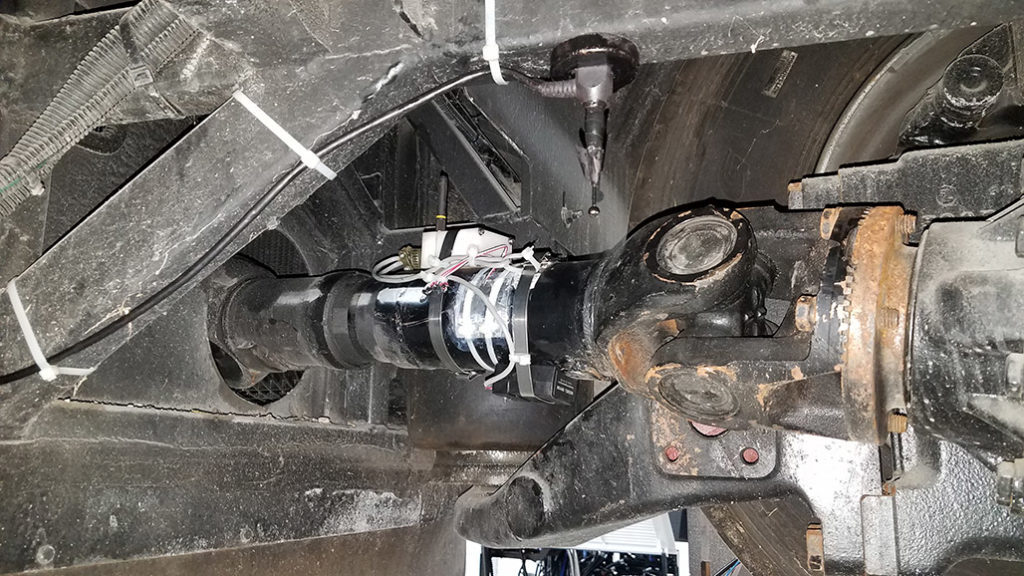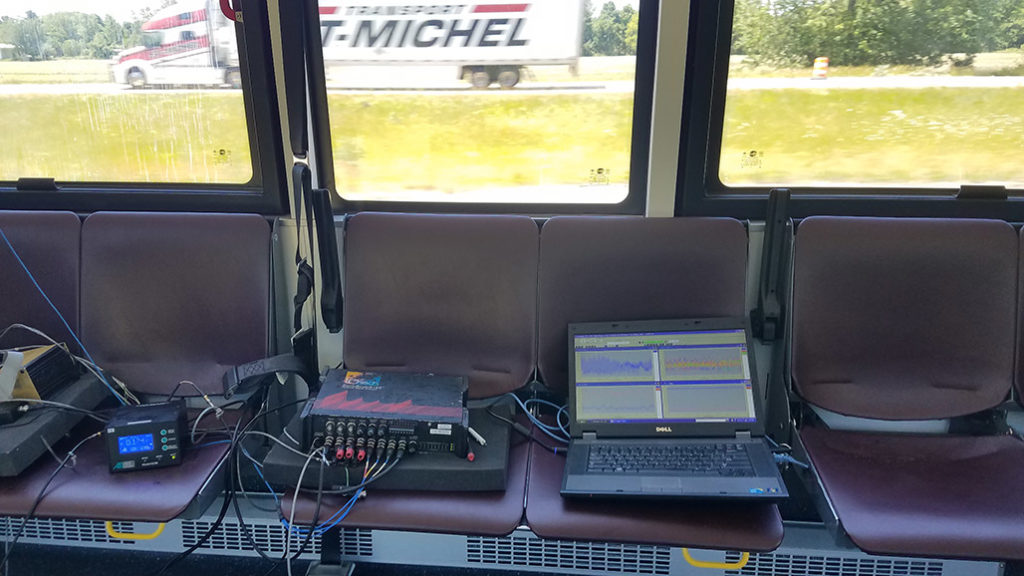
We took this show on the road…literally!
Sometimes identifying complex problems means using a lot of different tools.
The Issue
A bus manufacturer was having drive component failures and there were many theories as to what the problem might be. An IVC Technologies senior analyst utilized several sensor types to identify the issue.
The Analysis
The bus’s drive shaft was instrumented with:
- Strain gage-based torque telemetry to evaluate peak and dynamic torque loads
- Displacement sensors to evaluate excessive movement
- Accelerometers to evaluate vibration issues
- Thermocouples to evaluate heating
- A speed sensor

During road testing, data from all sensors was collected synchronously using a multi-channel data acquisition system for the full duration of the test. The data showed the following:
- Vibration related issue
Excessive looseness was causing a high vibration to be present at the gearbox output bearings. - Torsional issue
A torsional resonance was present in the output shaft that caused a large dynamic torque at certain speeds. Both of these issues were contributing to the failures.

The Proposed Solution
The proposed solution was to increase the size of the output shaft while increasing the size of the output shaft bearings and geometry of the output end of the gearbox. This would accomplish two things:
- Increase the stiffness of the output end of the gearbox which should reduce the vibration caused by looseness.
- Increase the spring constant of the drive shaft which would shift the torsional resonance out of the operating range.
Without evaluating the system with several sensor types, it is likely that only one of the issues would have been identified and addressed.
Most importantly…the drive components would still be failing.
Need assistance? Contact us.
